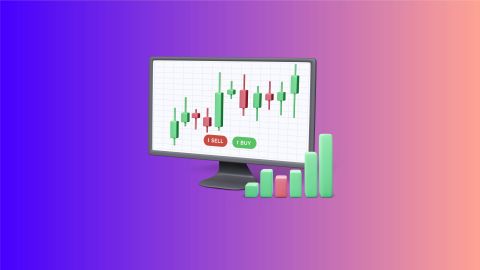Intraday trading involves capitalising on short-term price fluctuations within the same trading day to generate profits. Traders closely monitor stock price movements and utilise technical analysis tools to identify trading opportunities. Strategies such as scalping, which focuses on small frequent gains, and momentum trading, which capitalises on price trends, are commonly employed. It requires thorough market knowledge, effective risk management, and the ability to make quick decisions in a rapidly changing environment.
Features of intraday trading
Here are the features of intraday trading-
1. Ownership of stocks:
In intraday trading, traders must open and close their stock positions within the same trading day. If the position is not closed, it is automatically squared off at the prevailing market price. Since trades are settled within the day, ownership of the stock is not transferred to the trader.
2. Same day trading:
The objective of intraday trading is to capitalise on price fluctuations rather than to own stocks. All transactions must be completed within market hours to take advantage of daily price movements.
3. Leveraging:
Intraday traders can leverage their positions by borrowing funds from brokers to enhance their buying power. While leverage can amplify potential returns, it comes with associated risks and conditions that traders should thoroughly understand before utilising it.
4. Research:
Successful intraday trading requires extensive research on target stocks, analysis of market charts using indicators, and the development of personalised strategies. Implementing a stop-loss is crucial to mitigate the risk of substantial losses.
Benefits of intraday trading
Following are the benefits of intraday trading-
1. Lower risk:
Since stocks are bought and sold within the same day, exposure to long-term market risks is minimised. Unlike standard trading, where price fluctuations over an extended period can result in significant losses, intraday trading reduces this risk.
2. Lower commission charges:
Intraday trading typically incurs lower brokerage fees compared to standard trading, as there are no delivery charges involved. The costs related to securities transfer, such as transaction tax and service charges, are included in the brokerage fees, making it a cost-effective option.
3. Higher profits:
If executed with the right strategies, intraday trading can lead to substantial profits. In a rising market, capital appreciation can be achieved, and during downturns, traders can employ short-selling strategies to generate profits.
4. Liquidity:
Intraday trading offers high liquidity, allowing traders to recover their invested funds quickly without the need to hold assets for an extended period. This feature ensures financial flexibility to meet other personal or investment needs.
5. Capital gains through market fluctuations:
Traders can profit from both rising and falling markets by adopting appropriate strategies. In bullish markets, purchasing and selling stocks can lead to gains, while in bearish conditions, short-selling can provide profit opportunities.
Intraday trading indicators
Let us discover the different types of intraday trading indicators:
1. Moving average
Moving averages are the most common and widely used indicator. It is the line on the stock chart which connects the average closing rates over a given period. If you are considering a more extended period, the moving average will be more well-grounded. Moving averages let you comprehend the underlying movement of price as most of the time price of a stock doesn’t move only in one direction
2. Bollinger bands
Bollinger bands are a bit more advanced than moving averages. It comprises three lines - the moving average, an upper limit, and a lower limit. With all these, you can comprehend the underlying movement of the stocks better than just by moving averages
3. Momentum oscillators
Sometimes stock prices move unrelated to the bullish or bearish market trends
4. Relative strength index (RSI)
This gets calculated in the index form, narrowing the RSI score ranging between 0 to 100. The index increases when the price of the stock rises and vice versa.
How is intraday trading different from regular trading?
Let us explore how an intraday trading is different from a regular trading:
Aspect
|
Intraday trading
|
Regular trading (Delivery-based)
|
Definition
|
Buying and selling within the same day
|
Buying and holding for long term
|
Objective
|
Capitalising on short-term price movements
|
Long-term growth or dividends
|
Position duration
|
Must be squared off before market close
|
Can hold shares beyond the same day
|
Ownership change
|
No change in ownership
|
Ownership changes from seller to buyer
|
Settlement
|
Same-day settlement
|
Settlement within T+1 day after transaction
|
Risk and reward
|
Higher risk due to market volatility
|
Less volatile, requires patience
|
Tools
|
Technical analysis, charts, indicators
|
Fundamental analysis, company research, financial statements
|
Intraday trading vs delivery trading
Unlike intraday trading, if you buy a share but do not sell it on the same trading day, it is called delivery trading. In delivery trading, the stocks you buy get credited to your Demat. You hold it for as long as you want, for days, months, or years before selling it. Thus, you continue to have ownership of these stocks. In delivery trading, investors consider the long-term price movement of the stocks to book profits rather than their price fluctuations within the day.
Advantages and Disadvantages of Intraday Trading
Here are the advantages and disadvantages of intraday trading that you should be aware of-
Advantages
The trader can make profits based on the movement of the market price of the stocks.
The trader can avoid delivery charges.
If the trader doesn’t close the deal, the position gets squared off automatically, if it's set in the trading platform.
Disadvantages
The trader will not own the shares he traded for the day
The trader incurs a loss if the closing rate is not conducive. If the market is unfavorable, he may have to forego profit.
Alternative trading methods
- Standard trading:
This method involves long-term investment in stocks, enabling investors to benefit from both capital appreciation and dividend payouts. Although brokerage fees apply, the steady income generated offsets these costs.
- Momentum trading:
This strategy focuses on investing in stocks with high growth potential that may be undervalued due to temporary market fluctuations. Traders aim to benefit from relative or absolute momentum in stock performance.
- Swing trading:
Similar to momentum trading, swing trading targets short-term market movements. Traders invest in volatile stocks and sell them once a significant price movement is observed, aiming for quick profits.
Conclusion
Intraday trading allows investors to capitalize on short-term price fluctuations without requiring ownership of the underlying shares. This contrasts with delivery trading, which is geared towards long-term investment. While intraday trading offers the potential for rapid gains, it also carries greater risk due to market volatility. Traders often employ technical analysis tools, such as moving averages and Bollinger bands, to inform their decisions. However, it's crucial to acknowledge the inherent risks, including potential losses and the absence of shareholder rights. Ultimately, the suitability of intraday trading depends on an individual's investment objectives, risk tolerance, and understanding of market dynamics.
Other Popular Articles





